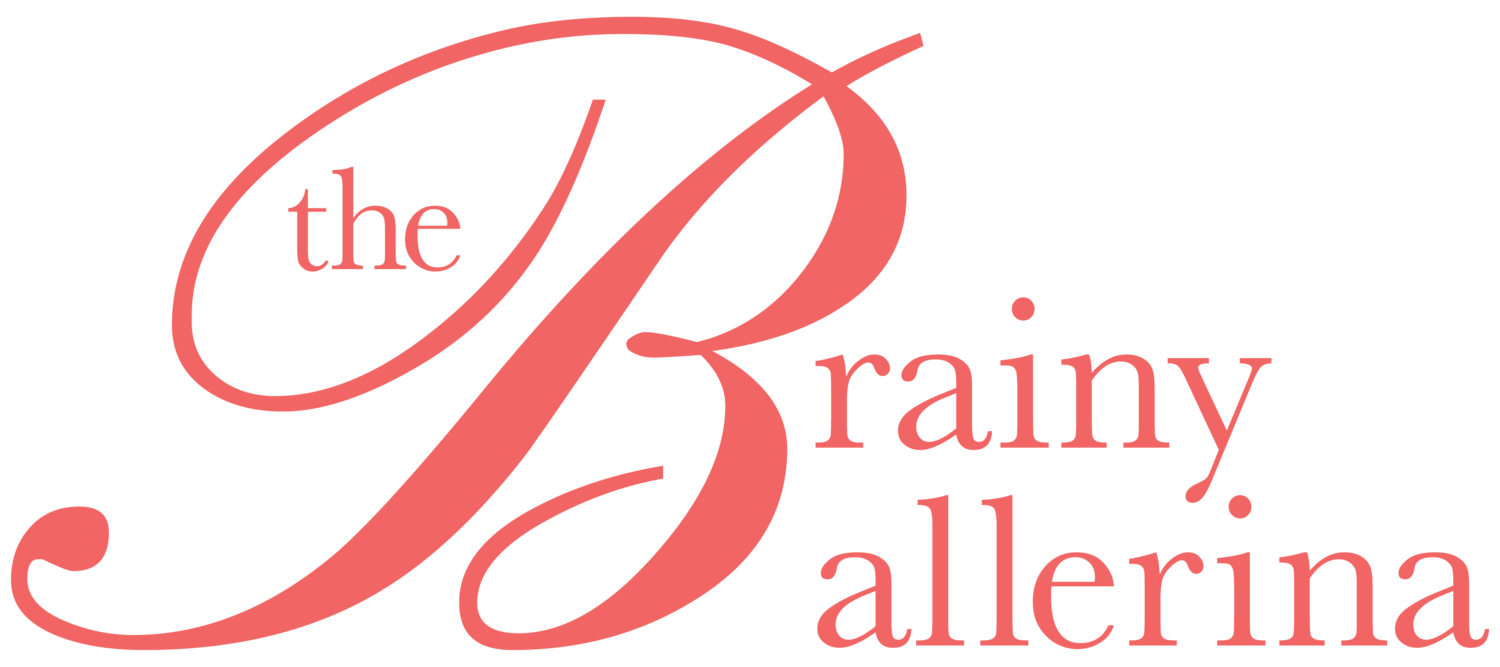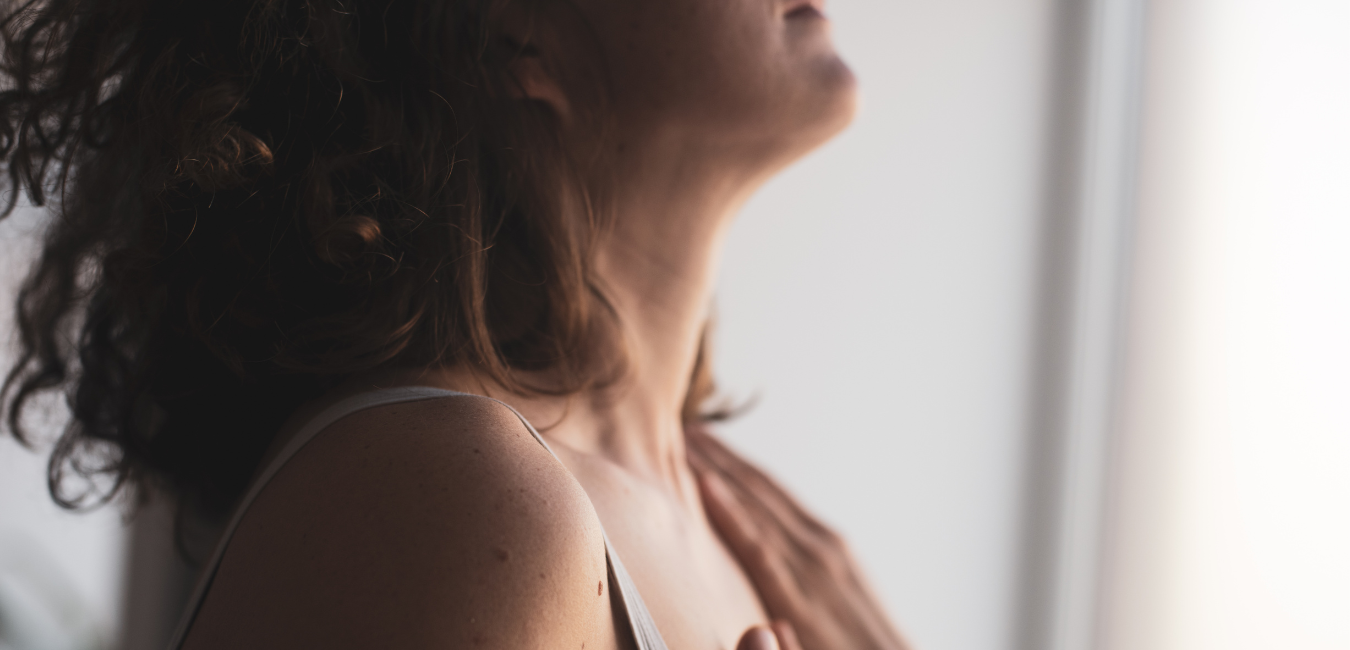The Secret to Long-term Dancer Health
I tried to become a dance robot. I resented my period. I pushed through pain. I hid a chronic health condition. I was dissatisfied with my body and what it could do.
And now?
I healed my endometriosis naturally. I honor my body not just as my instrument but as my home. I have access to a whole new level of expression through movement. I found my balance between striving and resting. I learned to prioritize my overall health without sacrificing success.
How did I do it? One of the tools I used: EMBODIMENT
We think of the brain as the control center for the body, but it’s just as true that the body is controlling the brain. Every breath, blink, step, and pirouette is influencing what the brain is doing. Right now you can deliberately slow down your breathing which will in turn slow your heartbeat and your brain will interpret something different about your emotional state. Right now you can release all the muscles around your shoulders and soften your abdomen and your brain will interpret that you are safer than you were 5 seconds ago.
Powerful stuff.
Put simply, being embodied is being connected to your body. And no I don’t mean that you have analyzed every movement and pore in the mirror. I mean what you are feeling, physically and emotionally.
Dancers have a tendency to DISembody (the opposite of being embodied) because we objectify our own bodies, trying to get them to move and look a certain way. We disconnect from our physical sensations in order to keep training through pain. We override the body with the mind in order to control it instead of working WITH the body.
So how embodied are you? Here are some questions to ask yourself:
Do I pay attention to the first signs of thirst or do I ignore it and then later realize I need to drink a huge glass of water?
Do I pay attention to when I’m hungry and what my BODY (not patterned thoughts) needs to feel nourished?
Do I pay attention to how my digestive system feels after eating certain foods and whether my gut is uncomfortable?
Do I rest when I start to feel a mild headache, sore throat, a recurrent injury flaring up, etc, or do I wait to rest until I’m actually ill or injured?
Do I go to bed when I feel tired or ignore it only to fall asleep on the sofa a bit later?
Do I pay attention to tension in my stomach telling me how I feel emotionally about a situation or person?
Do I connect to the physical sensations of fear, sadness, etc or do I push them down and ignore them?
Do I allow myself to feel physical pleasure?
Do I feel my feet on the ground when I walk or the sun/rain on my skin?
Do I use painkillers to mask the signals of my body instead of addressing the root cause?
None of us can do embodiment perfectly, so please don’t aim for that. We live in a culture where most people listen only to their head and not to their body (unless they’re in considerable pain). These questions are just a way to get curious, to bring awareness to the signals our bodies are constantly giving us, and to change the patterns of overwriting or ignoring and instead witnessing and hopefully taking different actions in response.
Humans are animals, intelligent ones (mostly), and privileged in the sense that we can dance and make music (yay)! Our ancient ancestors also danced and they danced all their lives, not professionally of course, but dancing was serious business for them too. It was how they honored their gods, it was how they bonded as a community, it was how they celebrated and grieved, it was how they marked marriage and prepared for war. They were deeply connected to the wisdom of their body. They had to be - it’s what kept them safe and healthy.
We can learn a lot from them and from our animal cousins about health and embodiment. If you have a pet, notice how they don’t wait to drink water if they’re thirsty. They don’t force themselves to stay awake if they need a nap. They are in tune with their body. “Yeah, but my dog doesn’t dance.” I hear you, there are many demands on human beings (which have advantages and disadvantages). I’m not about to start sleeping the same number of hours as my cats, but I let them be a reminder to slow down when I need to and check in with what’s going on inside.
One of my favorite embodiment practices is called a body scan meditation which helps relax the body and therefore helps us recover faster, feel safe, and therefore more centered. You can also start super simple by paying more attention to all your senses. For example, really tasting your morning drink or smelling your shampoo as you wash your hair or feeling the texture of your clothes on your skin… the little pleasures in life we forget to notice.
The more attuned you are to your body, the healthier you will become and the better you can connect to other people. Remember, you are the FIRST authority on your body. Experts can advise you, but you always have the final say.
A final word of WARNING…
Our body holds not only physical pain signals but also emotional ones. Our emotions are our biggest ally for making good decisions and for creating loving relationships. Emotions are felt in the body, they are not just thoughts. So when you connect to your body you are going to feel more, literally. This will become your superpower both as a dancer and a human. But it’s not an easy process. Talk about how you feel with a trusted friend. Seek support from a partner or family member. Hire a coach or mentor. Try therapy or somatic healing. Do whatever works for you, but don’t do this alone. Humans are always healthier together.
Meet the Author
Natalie Orr is an ex-professional dancer, teacher and coach. She built a successful dance teaching business in her early career and is now a full-time life coach and business mentor for dance lovers and dance educators who share the mission of making the world a healthier, more collaborative place. Natalie provides guidance and support to get courageous about sharing your vision with the world while creating financial freedom, strong relationships, and a lifestyle you love. She is also a content creator with more than 4.7 million YouTube views. Natalie has a Masters degree in Dance Anthropology from Roehampton University in London, and now lives in Spain with her husband and two adopted cats.
Follow Natalie on Instagram @nataliedanza.
If you liked this post, you might also like:




